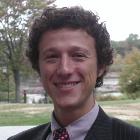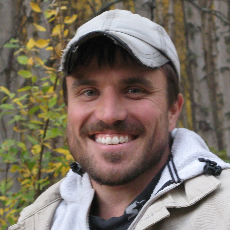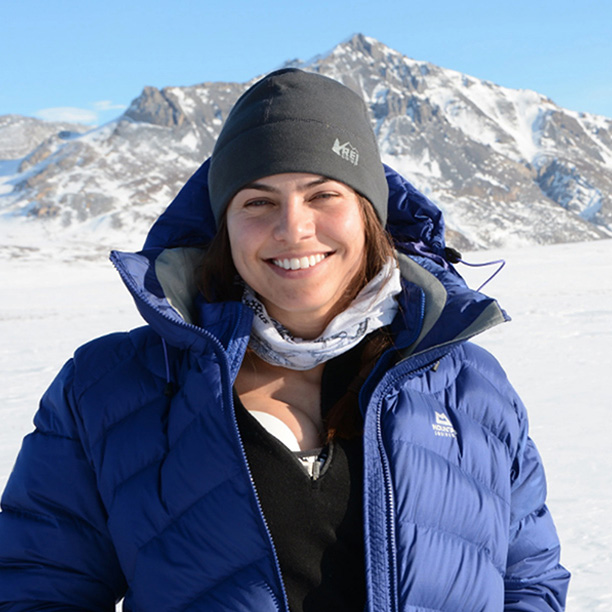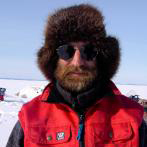Project Abstract
Across North America, Arctic and boreal regions have been warming at a rate two to three times higher than the global average. At the same time, human development continues to encroach and intensify, primarily due to demand for natural resources, such as oil and gas. The vast and remote nature of Arctic-boreal regions typify their landscapes, environment, wildlife, and people, but their size and isolation also make it difficult to study how their ecosystems are changing. To overcome these challenges, autonomous recording networks can be used to characterize "soundscapes"—a collection of sounds that emanate from landscapes. Unlike traditional observing methods that are expensive, labor-intensive, and logistically challenging, sound-recording networks provide a cost-effective means to both monitor and understand the response of wildlife to environmental and anthropogenic changes across vast areas. One particular challenge with this sound-measurement approach is extracting useful ecological information from the large volumes of soundscape data that are collected. This project will develop the techniques necessary to overcome this challenge.
The researchers' goal is to understand the influence of both environmental dynamics and increasing anthropogenic activity on the behavior and phenology of migratory caribou (Rangifer tarandus), waterfowl, and songbird communities in Arctic-boreal Alaska and northwestern Canada. Through co-production of knowledge with local land managers and Indigenous communities, the research team will combine field observations, modeling, and analyses that include: (1) soundscape measurements, (2) camera-trap observations, (3) automated soundscape analyses, (4) analyses of camera-trap caribou observations, (5) high-resolution modeling of environmental variables, (6) statistical analyses including wildlife occupancy, diversity, and phenology modeling, and (7) a human-computation game to collect descriptions of our acoustic recordings that allows for the participation of local and Indigenous players of the game. The project will contribute understanding of how both avian communities and caribou populations are responding to spatiotemporal variations in environmental conditions and increasing development of the oil and gas industry in a region where such comprehensive, large-scale research has rarely been possible. Further, at the request of various Tribal organizations, our research will provide insight into how industrial noise influences traditional practices. In addition, our research will provide baseline data on all-natural sounds, including data on bird and caribou activity, in the Arctic National Wildlife Refuge prior to oil and gas development. These datasets will be available to inform Indigenous practices and natural resource management, as well as facilitate future Environmental Assessments required by land managers and oil and gas developers.
Logistics Summary
This collaborative project between Boelman (1839198, LEAD, LDEO), Mandel (1839185, CUNY), Liston (1839195, CSU), and Brinkman (1839192, UAF) will use soundscape ecology to assess environmental and anthropogenic controls on wildlife behavior via observations and analyses to quantify the influence of changing environmental dynamics and increasing anthropogenic activity on the behavior and phenology of migratory caribou, waterfowl, and songbird communities in Arctic-Boreal Alaska and northwestern Canada. From 2019 through 2022, research teams of two will use soundscape instrumentation consisting of cameras and acoustics to collect data from caribou calving grounds in northern Alaska and Canada. In each year, instrumentation will be deployed in March/April, checked in July and retrieved during early October. Instrumentation will be deployed along the calving grounds for the Central Arctic and Porcupine Caribou herds. Fifteen sites will be established along the Dempster Highway in Canada between Dawson and Inuvik, 10 sites will be established along the Dalton Highway between Fairbanks and Prudhoe Bay, 20 sites will be established in the 1002 area of ANWR, and 20 sites will be established in the Prudhoe Bay oilfield. In 2019, researchers will visit sites leaving from Fairbanks, via truck rental for several days in March and establish 10 sites between Fairbanks and Happy Valley (just north of Toolik Field Station). Next, the researchers will drive from Fairbanks to Whitehorse, and then north to Inuvik along the Dempster Highway—15 sites will be established between Dawson and Inuvik—before driving to Fairbanks to return the rental truck to CPS. In May, an additional 20 sites will be established in the 1002 area of ANWR, and another 20 sites in the Prudhoe Bay oilfield via helicopter. The researchers will continue to work out of Prudhoe Bay and Toolik Field Station from May to October in order to access all of their field sites via CPS provided truck rental or helicopter support. In July 2020 two researchers will travel via truck to revisit all 10 sites between Fairbanks and Happy Valley (north of Toolik Field Station), spending two nights at Toolik along the way. They will also work out of Prudhoe Bay and visit sites there via helicopter. And travel to Whitehorse via truck in October for the sites along the Dempster Highway (Dawson to Inuvik).
Season Field Site
2019 Alaska - Arctic National Wildlife Refuge
2019 Alaska - Prudhoe Bay
2019 Alaska - Toolik
2019 Canada - Inuvik
2020 Alaska - Arctic National Wildlife Refuge
2020 Alaska - Fairbanks
2020 Alaska - Prudhoe Bay
2020 Alaska - Toolik
2020 Canada - Dawson
2020 Canada - Inuvik
2021 Alaska - Arctic National Wildlife Refuge
2021 Alaska - Fairbanks
2021 Alaska - Prudhoe Bay
2021 Alaska - Toolik
2021 Canada - Dawson
2021 Canada - Inuvik
2022 Alaska - Arctic National Wildlife Refuge
2022 Alaska - Fairbanks
2022 Alaska - Prudhoe Bay
2022 Alaska - Toolik
2022 Canada - Dawson
2022 Canada - Inuvik
Keywords
birds; caribou; climate change; ecoacoustics; indigenous communities; industrial activity; machine learning; SnowModel; soundscape analysis
Project Location
Dates
-Location
Prudhoe Bay, AK; ANWR, AK; Ivvavik National Park, Canada; Yukon, Canada; Northwest Territories, CanadaMembers
Principal Investigator

Principal Investigator

Co-Principal Investigator

Principal Investigator

Principal Investigator

